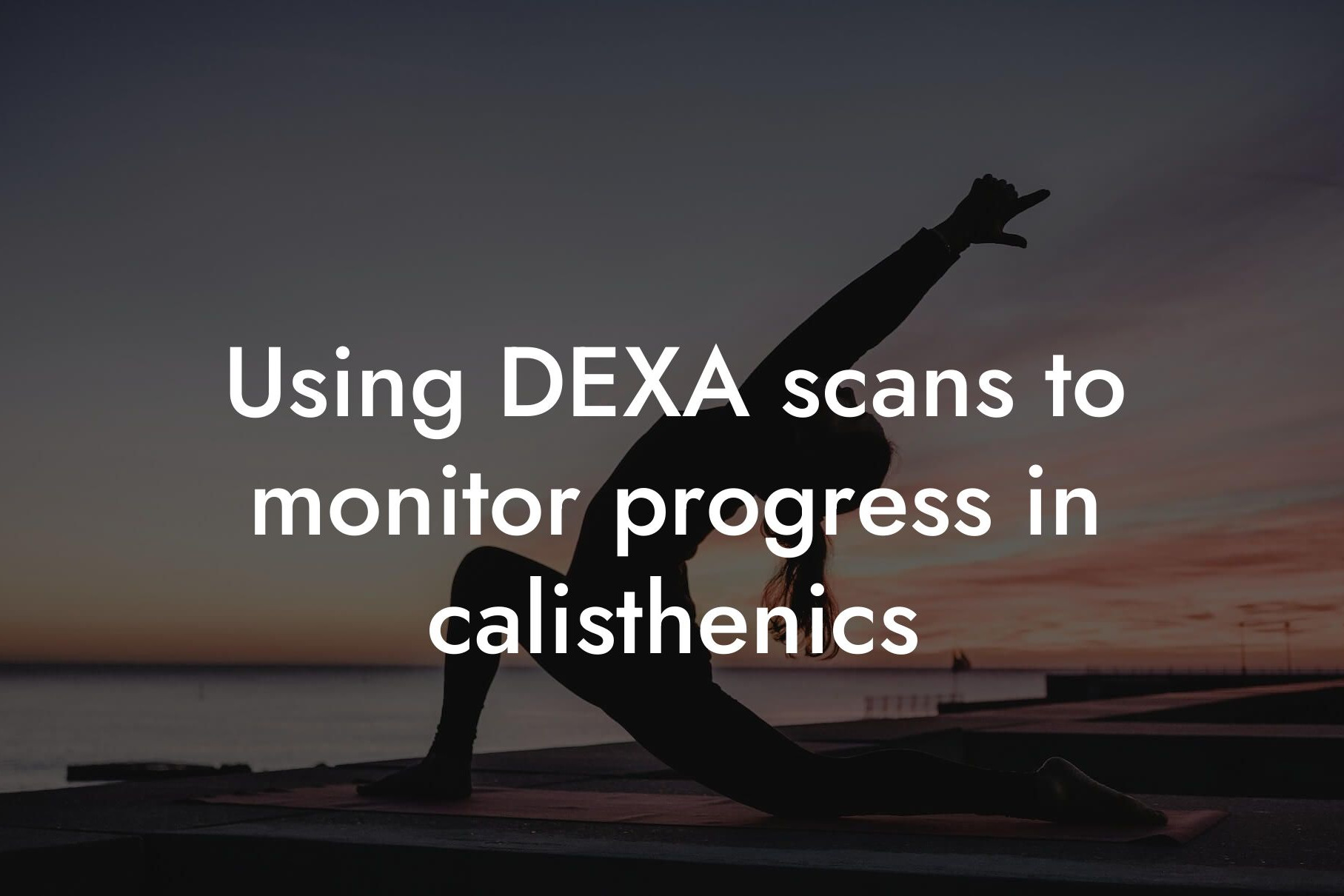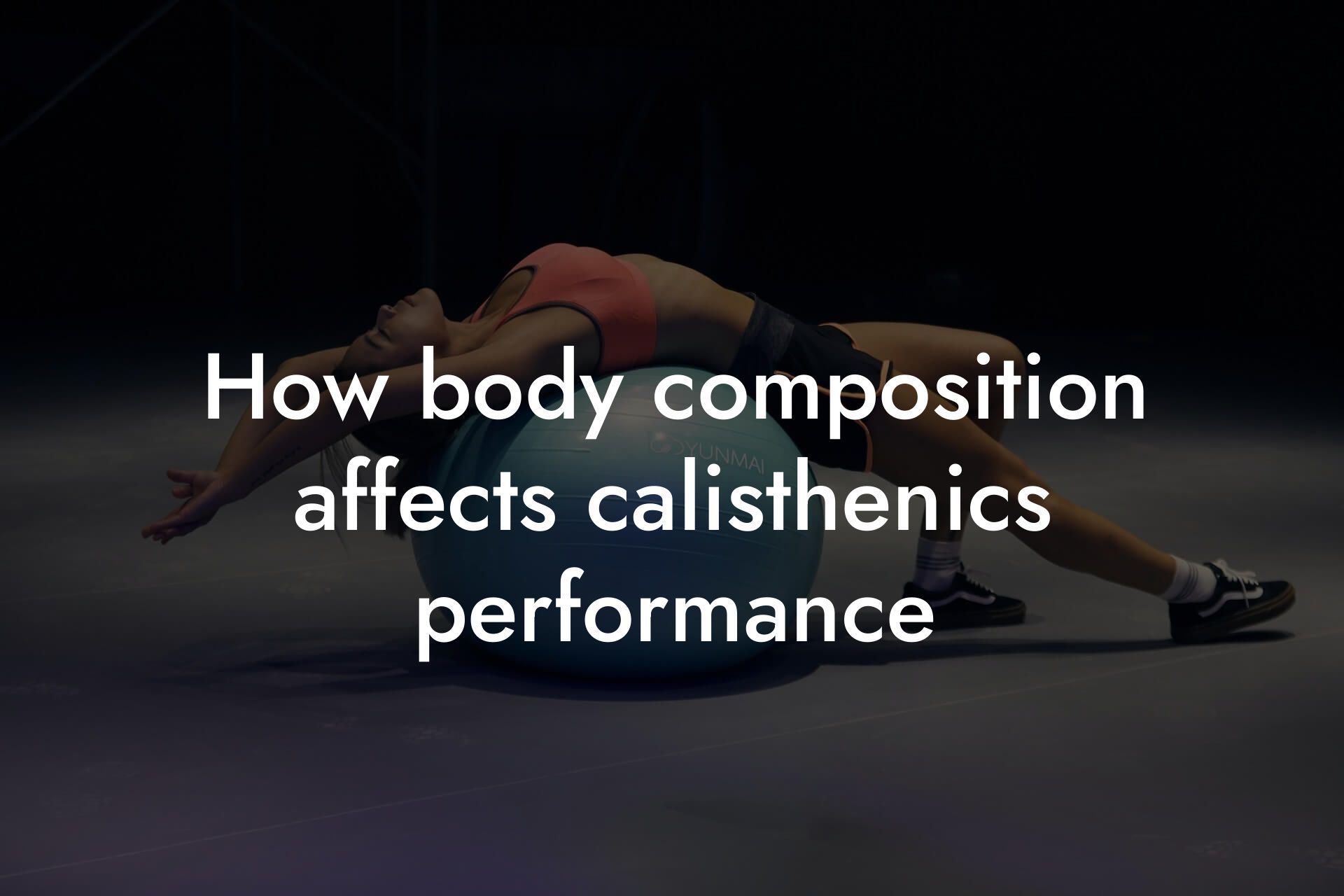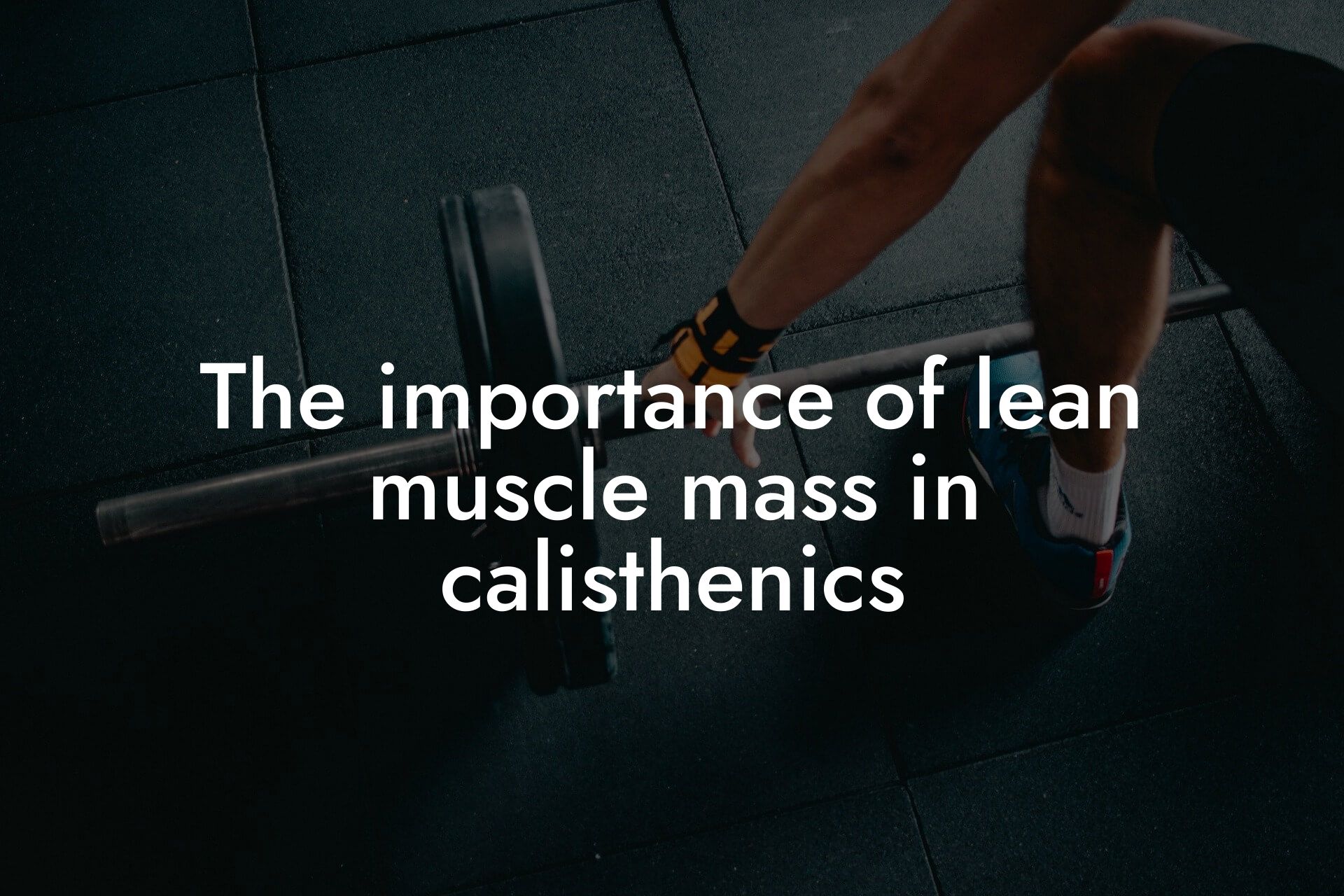As a high-earning professional, you understand the importance of maintaining a healthy and fit physique. Calisthenics training is an excellent way to achieve this goal, but have you ever stopped to think about the impact it has on your bone density? In this article, we'll delve into the world of bone density, its importance, and how calisthenics training can affect it.
Table of Contents
What is Bone Density?
Bone density refers to the measure of the amount of minerals, such as calcium and phosphorus, present in your bones. It's a crucial indicator of bone health, as it determines the strength and resilience of your bones. Peak bone density is typically reached in early adulthood, and it begins to decline with age. This decline can lead to osteoporosis, a condition characterized by brittle and fragile bones.
Why is Bone Density Important?
Bone density is essential for overall health and well-being. Strong bones provide a solid foundation for your body, allowing you to move freely and perform daily activities with ease. They also protect vital organs, such as the heart and lungs, from injury. Moreover, good bone density reduces the risk of osteoporosis, fractures, and osteopenia (low bone mass).
How Does Calisthenics Training Affect Bone Density?
Calisthenics training, which involves exercises that work multiple joints and muscle groups, can have both positive and negative effects on bone density. On the positive side, calisthenics exercises can:
- Increase bone density through weight-bearing activities, such as squats and lunges
- Improve muscle mass and strength, which can help support bone health
- Enhance bone flexibility and resilience through dynamic movements
However, if not done properly, calisthenics training can also have negative effects on bone density, such as:
- Overuse injuries, which can lead to bone stress fractures and decreased bone density
- Insufficient recovery time, resulting in inadequate bone repair and rebuilding
- Imbalanced training, which can put excessive stress on certain bones and joints
Benefits of Calisthenics Training for Bone Density
When done correctly, calisthenics training can provide numerous benefits for bone density, including:
- Increased bone density in the hips, spine, and legs
- Improved balance and coordination, reducing the risk of falls and fractures
- Enhanced overall fitness and athletic performance
Risks of Calisthenics Training for Bone Density
While calisthenics training can be beneficial for bone density, it's essential to be aware of the potential risks, including:
- Overtraining, which can lead to burnout and decreased bone density
- Poor form and technique, resulting in injuries and bone stress
- Inadequate nutrition and recovery, hindering bone repair and growth
How to Optimize Calisthenics Training for Bone Density
To maximize the benefits of calisthenics training for bone density, follow these guidelines:
- Incorporate weight-bearing exercises, such as squats, lunges, and deadlifts
- Focus on progressive overload, gradually increasing weight or resistance
- Incorporate exercises that target multiple joints and muscle groups
- Allow for adequate recovery time and prioritize nutrition for bone health
- Consult with a qualified trainer or healthcare professional to develop a personalized training program
Bone density plays a critical role in overall health and fitness, and calisthenics training can be an effective way to improve it. However, it's essential to be aware of the potential risks and take steps to optimize your training program. By incorporating weight-bearing exercises, focusing on progressive overload, and prioritizing recovery and nutrition, you can maximize the benefits of calisthenics training for bone density. At Tano Performance Group, we're committed to helping high-earning professionals like you achieve their fitness goals and maintain optimal bone health. Our DEXA machine provides a comprehensive body assessment, giving you the information you need to take your fitness to the next level.
Remember, a strong and healthy body starts with strong and healthy bones. By prioritizing bone density and incorporating calisthenics training into your fitness routine, you'll be well on your way to achieving your goals and maintaining a fit and healthy physique.
Frequently Asked Questions
What is bone density and why is it important for calisthenics training?
Bone density refers to the measure of how dense and strong your bones are. It's a critical aspect of overall health, especially for individuals engaging in high-impact activities like calisthenics training. Strong bones can support your muscles and joints, reducing the risk of injuries and fractures. As you age, bone density naturally decreases, making it essential to prioritize bone health through a combination of proper nutrition, exercise, and lifestyle habits.
How does calisthenics training impact bone density?
Calisthenics training, which involves bodyweight exercises like push-ups, squats, and lunges, can help improve bone density by subjecting your bones to controlled stress and load. This stimulates bone growth and density, particularly in weight-bearing joints like the hips, knees, and spine. Regular calisthenics training can help increase bone density, reducing the risk of osteoporosis and fractures.
What are the benefits of high bone density for athletes and fitness enthusiasts?
High bone density offers several benefits for athletes and fitness enthusiasts, including improved athletic performance, reduced risk of injuries, and enhanced overall health. Stronger bones can support heavier loads, allowing you to lift more weight and perform more intense exercises. This, in turn, can improve muscle growth and development. Additionally, high bone density can reduce the risk of osteoporosis and fractures, enabling you to maintain an active lifestyle well into old age.
How can I measure my bone density?
Bone density can be measured using a variety of techniques, including dual-energy X-ray absorptiometry (DXA), quantitative computed tomography (QCT), and peripheral dual-energy X-ray absorptiometry (pDXA). These tests use low-level X-rays to measure bone density in specific areas, such as the hips, spine, and wrists. Your healthcare provider can recommend the most suitable test for you based on your age, health status, and other factors.
What is osteoporosis, and how is it related to bone density?
Osteoporosis is a condition characterized by brittle and porous bones, making them more susceptible to fractures. It occurs when bone density decreases significantly, often due to hormonal changes, vitamin deficiencies, or a sedentary lifestyle. Osteoporosis can lead to debilitating fractures, chronic pain, and reduced mobility. Maintaining high bone density through exercise, nutrition, and lifestyle habits can help prevent or manage osteoporosis.
Can calisthenics training help prevent osteoporosis?
Yes, calisthenics training can help prevent osteoporosis by improving bone density and strength. The weight-bearing exercises involved in calisthenics stimulate bone growth and density, particularly in the hips, spine, and wrists – areas prone to osteoporosis. Regular calisthenics training can also improve balance, flexibility, and overall functional ability, reducing the risk of falls and fractures.
How often should I engage in calisthenics training to improve bone density?
Aim to engage in calisthenics training at least 2-3 times per week, with a minimum of 30 minutes per session. This frequency and duration can help stimulate bone growth and density. However, it's essential to listen to your body and allow for rest days to avoid overtraining and injury. Consistency is key, so find a routine that works for you and stick to it.
What are some essential nutrients for bone health and density?
Certain nutrients play a crucial role in maintaining strong bones, including calcium, vitamin D, magnesium, and phosphorus. Calcium is essential for bone mineralization, while vitamin D helps regulate calcium absorption. Magnesium and phosphorus also contribute to bone health and density. Ensure you're getting adequate amounts of these nutrients through your diet or supplements, if necessary.
Can I improve bone density through nutrition alone?
While nutrition plays a vital role in bone health, it's unlikely to improve bone density significantly through diet alone. A combination of proper nutrition, exercise, and lifestyle habits is necessary to achieve optimal bone density. However, a diet rich in calcium, vitamin D, and other essential nutrients can help support bone health and density.
How does age affect bone density?
Bone density naturally decreases with age, particularly after the age of 30. This process can accelerate in women during menopause due to hormonal changes. As you age, it's essential to prioritize bone health through exercise, nutrition, and lifestyle habits to maintain strong bones and reduce the risk of osteoporosis.
Can I improve bone density at any age?
Yes, you can improve bone density at any age. While it's more challenging to achieve significant improvements in older adults, regular exercise, proper nutrition, and lifestyle habits can still help maintain or improve bone density. It's essential to consult with a healthcare professional to develop a personalized plan tailored to your age, health status, and goals.
How does body composition affect bone density?
Body composition, including muscle mass and body fat percentage, can impact bone density. Maintaining a healthy body composition through a balanced diet and regular exercise can help support bone health and density. Excess body fat, particularly in the midsection, can increase the risk of osteoporosis and fractures.
Can calisthenics training help with weight loss and body composition?
Yes, calisthenics training can help with weight loss and body composition. The high-intensity exercises involved in calisthenics can burn calories, build muscle, and improve insulin sensitivity, leading to weight loss and improved body composition. Additionally, calisthenics training can improve overall functional ability, making it easier to maintain a healthy lifestyle.
How does sleep affect bone density?
Sleep plays a critical role in bone health and density. During sleep, your body repairs and regenerates tissues, including bone. Poor sleep quality and duration can disrupt this process, leading to decreased bone density and increased risk of osteoporosis. Aim for 7-9 hours of sleep per night to support bone health.
Can stress affect bone density?
Chronic stress can negatively impact bone density by increasing the production of cortisol, a hormone that can break down bone tissue. High levels of cortisol can also disrupt sleep, nutrition, and exercise habits, further compromising bone health. Engage in stress-reducing activities, such as meditation or yoga, to help manage stress and support bone health.
How does smoking affect bone density?
Smoking is a significant risk factor for osteoporosis and decreased bone density. Smoking can reduce blood flow to the bones, leading to a decrease in bone density and strength. Quitting smoking can help improve bone health and reduce the risk of osteoporosis.
Can calisthenics training improve overall health and well-being?
Yes, calisthenics training can improve overall health and well-being by increasing strength, flexibility, and cardiovascular fitness. Regular calisthenics training can also enhance mental health, reduce stress, and improve sleep quality. Additionally, the functional movements involved in calisthenics can improve daily activities and reduce the risk of injuries.
How can I incorporate calisthenics training into my busy schedule?
Incorporating calisthenics training into your busy schedule can be challenging, but it's not impossible. Start by committing to short, high-intensity sessions (20-30 minutes) 2-3 times per week. You can also break up your workout into shorter sessions throughout the day or use a bodyweight exercise app to guide you through quick workouts.
What are some common mistakes to avoid when starting a calisthenics training program?
Common mistakes to avoid when starting a calisthenics training program include poor form and technique, overtraining, and neglecting warm-up and cool-down exercises. It's essential to focus on proper form and technique to avoid injuries and ensure effective bone density improvement. Additionally, listen to your body and allow for rest days to avoid overtraining.
How can I track my progress and monitor bone density improvement?
Track your progress by monitoring your workout routine, including exercises, sets, reps, and weight. You can also track your body composition, sleep quality, and nutrition habits. Regularly schedule bone density tests with your healthcare provider to monitor improvements in bone density. Use a fitness tracker or mobile app to stay motivated and on track.
What role does genetics play in bone density?
Genetics can play a role in bone density, as certain genetic factors can affect bone health and density. However, genetics is only one aspect of bone health, and lifestyle habits, exercise, and nutrition can still significantly impact bone density. Consult with a healthcare professional to understand your genetic predispositions and develop a personalized plan to support bone health.
Can calisthenics training be modified for individuals with osteoporosis or joint issues?
Yes, calisthenics training can be modified for individuals with osteoporosis or joint issues. It's essential to consult with a healthcare professional or certified trainer to develop a personalized program that takes into account your specific needs and limitations. Modifications may include reducing impact, using assistive devices, or focusing on low-impact exercises.
How can I stay motivated and consistent with my calisthenics training program?
Stay motivated and consistent with your calisthenics training program by setting realistic goals, finding a workout buddy, and tracking your progress. Celebrate small victories, reward yourself for milestones achieved, and focus on the benefits of calisthenics training beyond just bone density improvement, such as improved overall health and well-being.
Here are some related articles you might love...
- Using DEXA scans to monitor progress in calisthenics
- How body composition affects calisthenics performance
- The importance of lean muscle mass in calisthenics
- Preventing injuries in calisthenics: A comprehensive guide
- Strength and conditioning programs for calisthenics practitioners
- Reducing body fat for improved strength-to-weight ratio in calisthenics
- Nutrition tips for calisthenics athletes
- Recovery strategies for calisthenics athletes
- How to build functional strength with calisthenics
Zak Faulkner
Zak Faulkner is a leading authority in the realm of physical health and body composition analysis, with over 15 years of experience helping professionals optimise their fitness and well-being. As one the experts behind Tano Performance Group, Zak has dedicated his career to providing in-depth, science-backed insights that empower clients to elevate their physical performance and overall health.
With extensive knowledge of DEXA technology, Zak specializes in delivering comprehensive body assessments that offer precise data on body fat, muscle mass, bone density, and overall physique. His expertise enables individuals to make informed decisions and achieve their fitness goals with accuracy and confidence. Zak’s approach is rooted in a deep understanding of human physiology, combined with a passion for helping clients unlock their full potential through personalised strategies.
Over the years, Zak has earned a reputation for his commitment to excellence, precision, and client-focused service. His guidance is trusted by top professionals who demand the best when it comes to their health. Whether advising on fitness programs, nutritional strategies, or long-term wellness plans, Zak Faulkner’s insights are a valuable resource for anyone serious about taking their health and fitness to the next level.
At Tano Performance Group, Zak continues to lead our Content Team revolutionising how professionals approach their physical health, offering unparalleled expertise that drives real results.




